ST. PAUL, MINN — Last month the big news focused on UP; this time look to WW (we all know who I mean). The reason? Wills held their first-ever paragliding seminar. Intended for dealers, the event drew well, including Morningside (NH) and Fly High (NY) from the east, five pilots from Japan, and the usual pros from the west coast (Windsports, Mission, HG Center, and Hang Flight, among several others). Total attendance was 35+ for the 10-day long event. The first days were basic training in flying paragliders, followed by an ICP and advanced canopy handling. The basic days were incredibly reminiscent of hang gliding 15 years back. Guys like Larry Tudor, Rob McKenzie, and Joe Greblo were seen jumping on the launch truck like it was their first day of flying, counting the number of flights they made in a day, and looking ever-so novice as they grappled with new wings and techniques.
Product Lines – February 1991
ST. PAUL, MINN — This month’s big news focuses on the UP company. As many of you readers are veterans of the sport, the history of UP is familiar. The illustrious SoCal builder has undergone several designers, managers, and owners. Each such change no doubt extracted a toll. As ’91 begins UP launches into yet another transformation. ••• To begin, the mysterious Terry Reynolds wing mentioned in December has now popped up… guess where? Yup! UP will be the builder of the newly named TRX. Check their ad in this issue. Reynolds will fly the TRX in the Australian Nats, then will join fellow ’91 World Team Member, Tony Barton, at the Brazilian Worlds. The TRX is a high aspect ratio wing (8:1) with contemporary span (36 ft) and planform (132¡ nose) that tips the scales very lightly (60 lbs) by using carbon fiber spars built in a $9 million shop.
Product Lines – January 1991
ST PAUL, MINN — Aloha! With his wife, Toni, Jerry Forburger completed his deal with airpark developer, Bill Fulton. The ATOL’ers have begun employment with Sport Aviation Hawaii and will begin by offering tandem intros to the islands’ millions of visitors. Tourists and students will get to soar some the smoothest lift in the world (“…after about 700 feet, lift seems to fill the whole valley.”), viewing spectacular scenery: incredibly steep green mountains, cascading waterfalls, and an uncommercialized tropical landscape. Few outsiders have ever set foot in the Kaaawa Valley ’til Fulton made his deal with the Kualoa Ranch family. Says Fulton, “We’ve had visits by several experts. Many think Sport Aviation could be one of the world’s largest schools.” To qualify for such a title, the business will count an expected 20,000 Japanese tourists a year flying on the world’s longest Hang Glider Simulator®. ||| Fulton orchestrated hang gliding participation in the Navy Hydrofest ’90, a fund raiser (needed after budget cuts) to help the Navy provide recreation for the thousands of sailors who regularly dock and restock at Pearl Harbor.
Product Lines – December1990
WASHINGTON D.C. — This month’s “Product Lines” comes from our nation’s capital at the occasion of the USHGA’s fall board of directors meeting. Other reports will relate the actions of the board. But at the gathering, two interesting and nascent product-related stories emerged. ||| No. 1 is confirmation by mainline hang gliding writer, Dennis Pagen, regarding his plans to pursue a longtime desire to design and build his own glider. A rumor that he would abandon his writing efforts (supposedly to focus on a new manufacture undertaking) proved to be baseless. He does plan to take preliminary steps toward a “limited production” of a new design. But “I’m not doing this as a income-earning venture,” says Pagen, “That’s not my present goal.” ||| No. 2 comes after lengthy prototype activities by World Team member, Terry Reynolds of Colorado. Employing exotic new airframe materials, you’ll want to read more on this exciting project next month, after additional tests.
Product Lines – November 1990
ST. PAUL, MINN — In announcing minor refinements on the Sensor E model, Seedwings begins to reveal their accord with the Austrian distributor now representing the brand in Europe. ||| First, the E model has control bar hardware which permits the glider to be laid down flat without disassembly of the wings. This has long been a requirement of the European pilot. Next, the Sensor has a speedbar, which they’ve subjected to 1,000 pounds without seeing deformation. It has only a 2.5 inch offset, reducing flex and allowing better in-bag storage. ||| Bob Trampenau’s design will now use streamlined down tubes offered by Finsterwalder, one of Europe’s up and coming manufacturers (who recently acquired the Charly company, a big manufacturer of safety and accessory products in Germany). Seedwings has enabled the airfoil downtubes to fit all models of the Sensor line. ||| While many pilots are attracted to the airfoil downtubes, some pilots raise a question.
Product Lines – October 1990
ST PAUL, MINN — According to several newspapers across the USA, Eric Raymond has finally flown his solar-powered ultralight motorglider from San Diego to Kitty Hawk… well, almost. He reportedly called it quits nine miles short. I find this a fascinating project but can’t figure why Eric didn’t talk about it to the aviation press, in whose rags nary a word has been seen. Raymond once told me the project was “secret.” Even the San Diego HGA’s newsletter, the Flier, had to adapt the news from the LA Times ||| The bird looks sleek, with a shape surprisingly similar to Advanced Aviation’s Sierra (see earlier “Product Lines”), and has Sanyo sponsorship, using their new solar cells with a power-to-weight ratio ten times higher than conventional cells. The 57 foot span machine weighs 198 pounds and can cruise about 40 mph. Eric, you talkin’ yet? ||| Mr. Test Rig, Mark West, has a newer yet version to use in dynamically testing hang gliders.
Product Lines – September 1990
ST. PAUL, MINN — September ’90 begins year #2 for this column in Hang Gliding magazine… thanks for your enthusiastic readership. This is also the month that Prez George Bush has declared to be Sport Aviation Month (thanks to a lengthy effort by the NAA). Does this mean we’ve arrived? ||| Aero towing development continues to complement the successful truck tow method initiated by ATOL. Florida designer, Bobby Bailey, has returned from a couple months in Australia helping Bill Moyes develop a prototype aero tug based on Bailey’s work for Advanced Aviation. Bailey reports the plane flies well. After further changes stall was seen at only 18 mph. Plans call for Bailey to return to Australia next year to assist with intitial production. ||| Why is Moyes so keen on this idea (that he’d spend considerably to hire and transport Bailey plus equipment costs)? A veteran towing enthusiast like Moyes may just be expanding his understanding of the art.
Product Lines – August 1990
ST. PAUL, MINN — New-age harnesses have arrived. They feature several innovations, but perhaps the most salient is the integral BRS rocket (to deploy the ‘chute of course). Don Quackenbush of Sylmar produces the Mantis harness, a beautiful example of the harness-maker’s art. The rocket is almost entirely tucked inside the harness with only a few inches of the launch tube showing. This with BRS designers’ blessing. Pilots seem excited about the harness, “…can’t stop talking about the comfort, easy pitch control, and flashy fluorescent colors.” Dial Don at 818/367-6050. ||| Another is Jeff Williams’ Avsac harness, a second harness designed with integral BRS rocket. Jeff uses a different style but achieves similar rave reviews from Region 2 flyers. Jeff is also sail loft manager for Pacific Airwave so you can reach him at 408/422-2299. ||| Speaking of BRS, the rocket maker has three new products. One is advertised in this issue: their Cordless model.
Product Lines – July 1990
ST PAUL, MINN — Several recent calls and letters referred to rigid wings presented here. Are we experiencing an upsurge of real interest? Or just another bubble of enthusiasm that will burst with the announcement of some new hotter-than-ever rag wing? No one knows. ||| Meanwhile in response to several inquiries, you can contact the Owens Composites Swift people at 10000 Trumbull SE, Albuquerque NM 87123. Their February Swift News announced work on an article for Hang Gliding. Watch for it. ||| Two other projects bear mention here: Advanced’s Sierra and the Cloud Dancer ||| The ultralight company Advanced Aviation, is flying their second prototype Sierra ultralight sailplane (42 foot span and greatly cleaned up). I saw #2 flown by towplane designer Bobby Bailey — who is also the principal designer of this bird — and I flew the #1 machine some months ago. The original prototype had promise which the successor significantly reveals.
Product Lines – June 1990
ST. PAUL, MINN — With this issue, “Product Lines” begins its twelfth year. I thank each of you for your loyal readership. Every year, “Product Lines” sets a new record for a continuous run of any hang gliding column… it literally couldn’t have been done without your interest. ||| Let’s look south to the new, improved Florida towing scene. The main attraction is the “elephant aileron”-equipped Bobby Bailey aerotug (also see Barbara and Steve Flynn’s story in the February ’90 Hang Gliding). After the kickoff Sun ‘n’ Fun airshow in Lakeland, Florida, the Dragonflyers club had an Easter weekend cross country contest at Lake Wales. The close dates allowed a number of out-of-staters to get some air behind the King Cobra ultralight. Bailey has been the pivotal designer, but he’s had active “consultants” like Campbell Bowen, a longtime kingpin of Florida hang gliding. Bobby himself towed me to 6,600 feet above flat Florida.
Product Lines – May 1990
ST. PAUL, MINN — As you read this, the spring board of directors meeting is history. Prior to the assembly of regional leaders, a storm of information was mailed by our new, more businesslike headquarters. In the deluge were stats on our sport: the results of the fall director ballot and its member survey. Of our 11/89 member base of 7,496, 1,157 of you responded (15.4%), a high “confidence rating” number. Like most tables of figures, these don’t make fascinating reading (unless you’re in the business perhaps). What I’ll focus on here are two areas: glider brand market share and interest in paragliding. ||| It should surprise no one that Wills is the leading U.S. builder of gliders. At 34.1% nationally, they lead by ten points over second place Pacific Airwave (24.7%). PA’s rank may also not surprise you, but it proves the Salinas bunch–now with majority foreign ownership–has come a long way in just a few years.
Product Lines – March 1990
ST. PAUL, MINN — Easily the biggest news in American hang gliding is Bill Bennett leaving glider manufacturing. After Delta Wing celebrated their 20th Anniversary last year this would come as a shock! But, “It’s nonsense!” replies Bill. True, UP International will now be building Uncle Bill’s successful Dream series. Also true, he stopped his ads. But Bennett reports he and old crony Dick Boone have recently collaborated on a new high performance design. It just flew at Torrey; they’re pleased. Before the unfortunate loss of his wife Paulette, due to cancer, Bill wanted to eliminate some obligations to dedicate more time to his ailing spouse. Licensing the Dream to UP for 3 years was part of this effort. Delta Wing may next move to smaller quarters. ||| Bill was also considering a bid on the beach operation up near Monterey, a site currently served by Jim Johns’ Western Hang Gliders.
Product Lines – February 1990
ST. PAUL, MN — Used to writing “1990” on your checks and letters yet? A new decade begins to unfold… against a backdrop of the most astounding political changes of modern history. The effects of the so-called “democratization” of eastern Europe may have profound influence even on lil’ ol’ hang gliding. USHGA Boss Jerry Bruning sent along a copy of a FAX to Prez Russ Locke. The letter from General Director Kakurin of Interaero requests info on the U.S. competition schedule for 1990. It seems Soviet pilots may plan to attend some contests. Interaero’s duties for the Soviet HG Federation also include the inviting and receiving of foreign teams to its own competitions. Most notably Comrade Kakurin suggests the “Peace Cup” and the USSR Championships. The Peace Cup is in May; the Championships in July. ||| Also in the month of May, Brian Milton (remember him?) will kick off his Superleague.
Product Lines – January 1990
ST. PAUL, MINN — Hey! Welcome to the ’90s… beginning of the third full decade for our sport. Oh god: “thirtysomething!” The final leg of the century (and millennia). Glad to have you along for the read. Thanks for a continuing stream of notes or calls. Y-O-U help write this column! ||| First, in the “Bet You Didn’t Know This Dept,” HGM editor Gil Dodgen had every piece of his nearly-new, high-tech desktop publishing gear stolen from his office last month. Luckily, his insurance replaced everything. Notice any delay? Extra effort on Gil’s part kept HGM mostly on schedule. ||| The heat is on… for Mexican flying tours. I’m amazed at the interest pilots are showing to be chauffeured around our neighbor to the south. Other SoCal shops offer tours, but the primary forces are Paul Burns’ Windgypsy (714/678-5418) and John Olson’s Safari Mexico (702/786-3944). Windgypsy offers two 8 day/7 night tours (differing sites) and provides bilingual guides, hotel, drinking water, ground transportation, and site refreshments.
Light Sport Aircraft Specifications
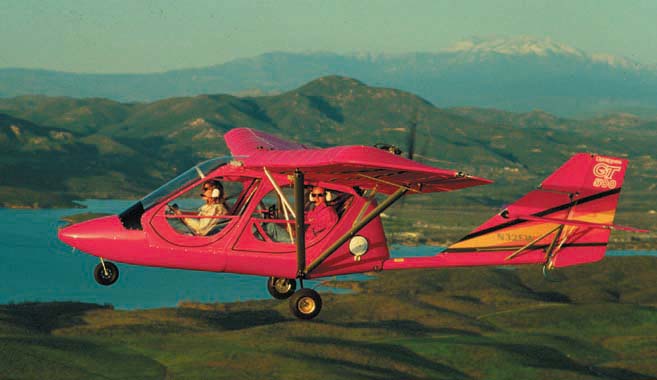
Quicksilver's already-certified (under primary category) GT500 may be one of the first aircraft to win approval as an LSA.

The Australian Edge trike has already passed rigorous certification in its home country. Some builders believe this weight-shift machine will soon qualify for LSA.

A fine example of an LSA candidate is this FK9 from Germany. Fiberglass is used extensively, and it performs at the upper range of the proposed LSA specifications.
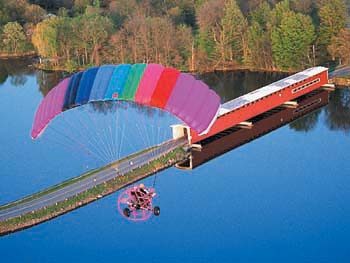

How do we evaluate light-sport aircraft? The FAA’s proposed SportPlanes™ /light-sport aircraft (LSA) rule is being discussed in hangars across America. But it is also being discussed at airports all over Europe—more than you may think. The global reach of this initiative is visible by the large number of European suppliers aiming their sights on the huge U.S. market. Many believe they have an aircraft that fits the standard. In the previous issue of KITPLANES®, you read Brian E. Clark’s summary of how European aircraft manufacturers are responding to LSA. In this issue, you can look at Barnaby Wainfan’s analysis of the aerodynamics of aircraft that meet the standard. In concert, this column attempts to add information about LSA candidate aircraft that are flying now. I’ve had the pleasure to fly many of the aircraft that may one day call themselves LSAs. In that flying, I’ve learned some lessons about what you might expect and how to evaluate what interests you.
Wings and Strings 2000
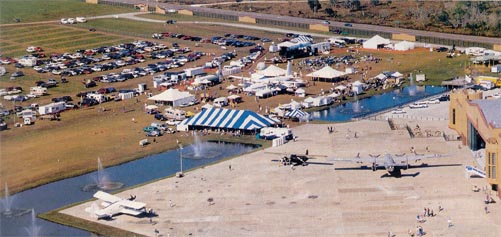
Wings & Strings 2000 was a success for both flying enthusiasts and Americana music fans.

The Sunderland seaplane sits on the grass at Florida's Fantasy of Flight tourist attraction, which is not far from Disney World.

Wings & Strings proudly mixes flying and music at the main stage.

An authentic German Storch like the one that rescued Mussolini from a mountaintop during WW-II sits on the ramp at Fantasy of Flight. A gun faces rearward for protection.

The Storch photo plane returns to land on one of two long turf runways. Richard Johnson is at the controls. (Above Left)
The Storch has been carefully restored to original condition. Even the panel placards are hand-lettered in German. (Below Right)

Admirers of aviation and music convene at this annual Florida event. Naturally, pilots have interests besides airplanes. I’d bet all fliers enjoy one kind or another of music. Hang glider pilots occasionally fly with a portable CD player at sites such as Torrey Pines near San Diego. The California glider port shared jointly by sailplanes, hang gliders, paragliders, and RC models offers butter-smooth ridge lift. The gentle sea breezes make for such mellow conditions that some say music complements the flying. Yet most pilots are too busy with controls and instruments, are concentrating too hard on navigation, or are simply too engrossed in the joy of flying to want music aloft. CD players in homebuilts or factory aircraft are hardly commonplace. But another way to indulge your musical and aviation interests is to visit Florida’s Fantasy of Flight tourist attraction on the occasion of the annual Wings & Strings Americana Music Festival.
Not All Are Light-Sport Aircraft

Not all light aircraft will fit the light-sport aircraft mold. In light aviation, excitement appears focused on FAA’s proposed Sport Pilot/light-sport aircraft proposal. The proposed rule may hold great promise, but it won’t consume all of light aviation, not by a wide margin. Near and dear to KITPLANES® readers’ hearts is the so-called 51% rule. The legality of building your own plane from scratch or from a kit is in no danger, and it will continue to be a source of satisfaction for many aviation craftsmen. A second safe harbor is the lightly regulated Part 103 ultralight segment. The FAA has made it abundantly clear that there are no plans to alter FAR Part 103. In fact, it points to Part 103 as a success story that can offer guidance to industry leaders as they fashion a new set of rules for light-sport aircraft, which KITPLANES®has labeled SportPlanes™. (Under the FAA’s sport pilot/SportPlanes™ plan, manufacturers will arrive at their own consensus standards for airworthiness—a situation successfully achieved by hang glider manufacturers.) Celebrate Part 103 It lives!
New Ultralights at Sun ‘n Fun
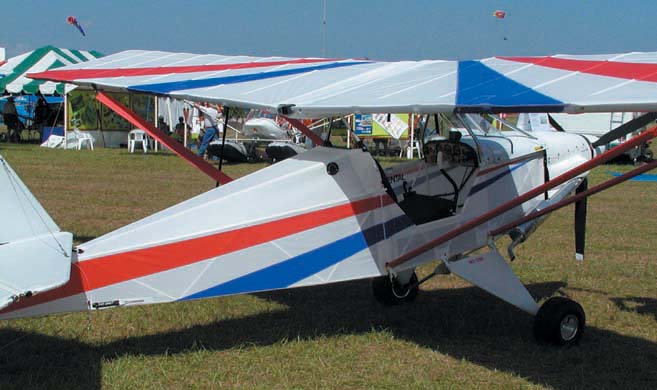
The Bearcat is the newest offering from Aerolites, Inc.

Flying boats like this Ramphos are versatile, fun and inexpensive compared to most floatplanes.

Air Creation unveiled its new speed wing at Sun 'n Fun.

The Italian Stork design is available with Rotax 912 or Jabiru 220 engines for a fast, comfortable cruise.
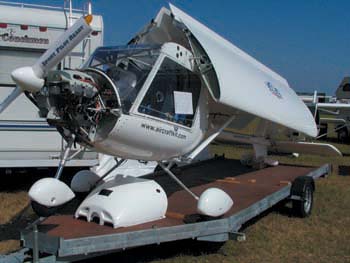
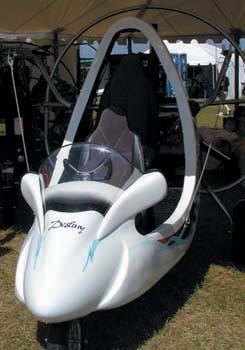
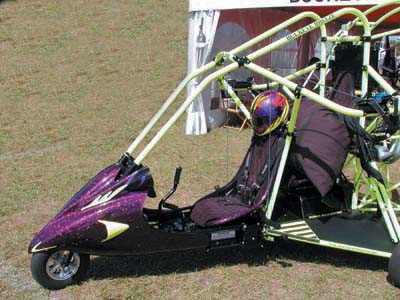

New ultralights and light aircraft were featured at Sun ‘n Fun As flying season begins, Florida’s popular Sun ’n Fun airshow brings a focus on new aircraft of all types. Aviation writers review the new machines revealed at the event. Yet many machines are often overlooked in the rush to place the most attention-getting aircraft onto magazine covers and into survey articles. This month, we cover a few ultralights and light aircraft you should find interesting. While aircraft like Titan’s T-51 Mustang, Just Aircraft’s Escapade, Airborne’s XT and Sabre’s Wildcat garnered lots of attention, designers of other ultralights have also been working hard. Ramphos One machine no one had seen before was the Ramphos amphibious trike. Though the amphibious trike concept has been used by numerous other companies, the Ramphos has features the others have lacked such as its counter-rotating propeller. A prior model required a small vertical tail and distinguished itself by a composite hoop surrounding the propeller arc.
How-to-Buy a Lightplane — Part 3 of 3
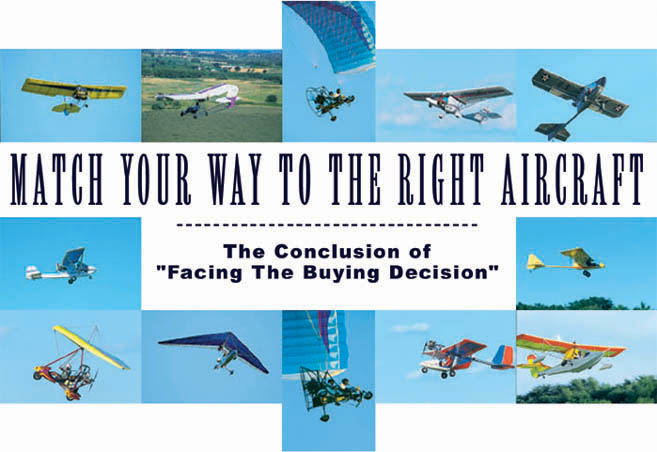



In the previous two installments, we’ve discussed you, the pilot, and the many types of aircraft choices you have. As we wrap up this series, we’ll put it all together and try to help you narrow your choices to a few models. Notice the word “try.” It is important that you understand that it is not possible to direct you to the one-and-only best choice of aircraft. Novice buyers often seek assistance but even experienced pilots can become swayed and end up purchasing the wrong aircraft for their needs and desires. Because aircraft purchases are commonly emotional decisions, it is helpful to gain a “second opinion” to help make a more rational choice. Many years ago, at the beginning of my career writing articles in light aviation, I made a similar attempt to help hang glider pilots choose the right glider. I compared nine contemporary models to an idealized “perfect” glider and through a series of questions much like those below, tried to steer pilots to the one right glider for them.
How-to-Buy a Lightplane — Part 2 of 3
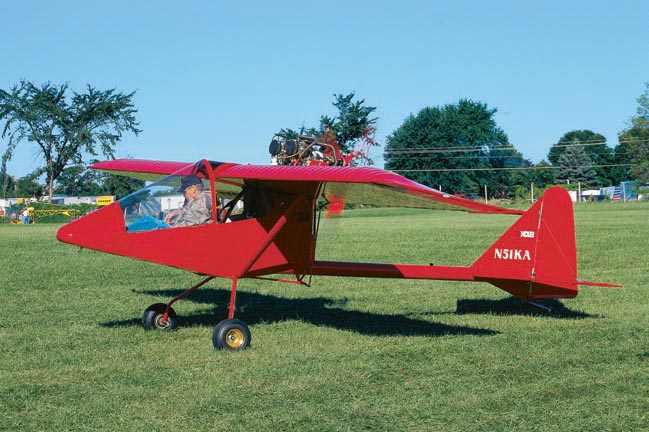
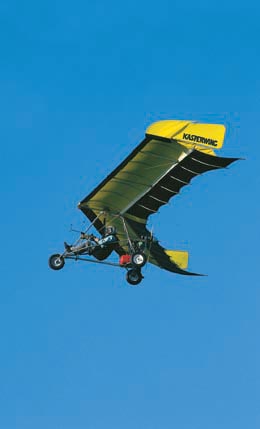
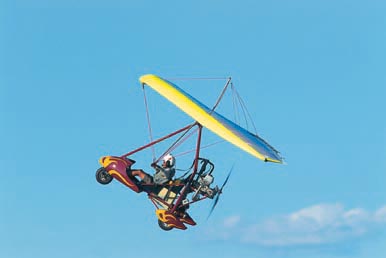
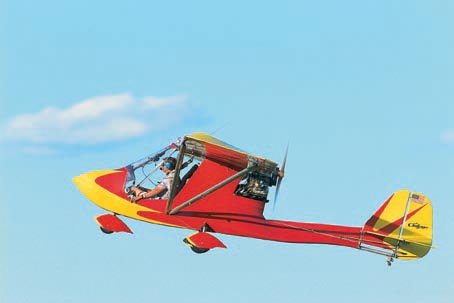

FACING THE BUYING DECISION, PART II Last time we discussed the pilot (you!); this time we discuss the many types of aircraft choices you have. In the last installment, we’ll put these together and help you narrow your choices to a few models. What Kind of Pilot Are You? Let’s just say you actually know yourself. While this sounds like a comment that deserves a “Duh!” response, don’t be too quick to judge. If every pilot or buyer of aircraft knew what they needed or wanted, my job would be easier. But it isn’t so. Most pilots know something about what they want, but many don’t have enough information to make the best decision. Some readers are “experts.” A good many ultralight or light plane enthusiasts have been around long enough and owned enough variety of ultralights to know what they like. These veteran sport aviators represent a lot of combined experience.
- « Previous Page
- 1
- …
- 91
- 92
- 93
- 94
- 95
- …
- 97
- Next Page »

